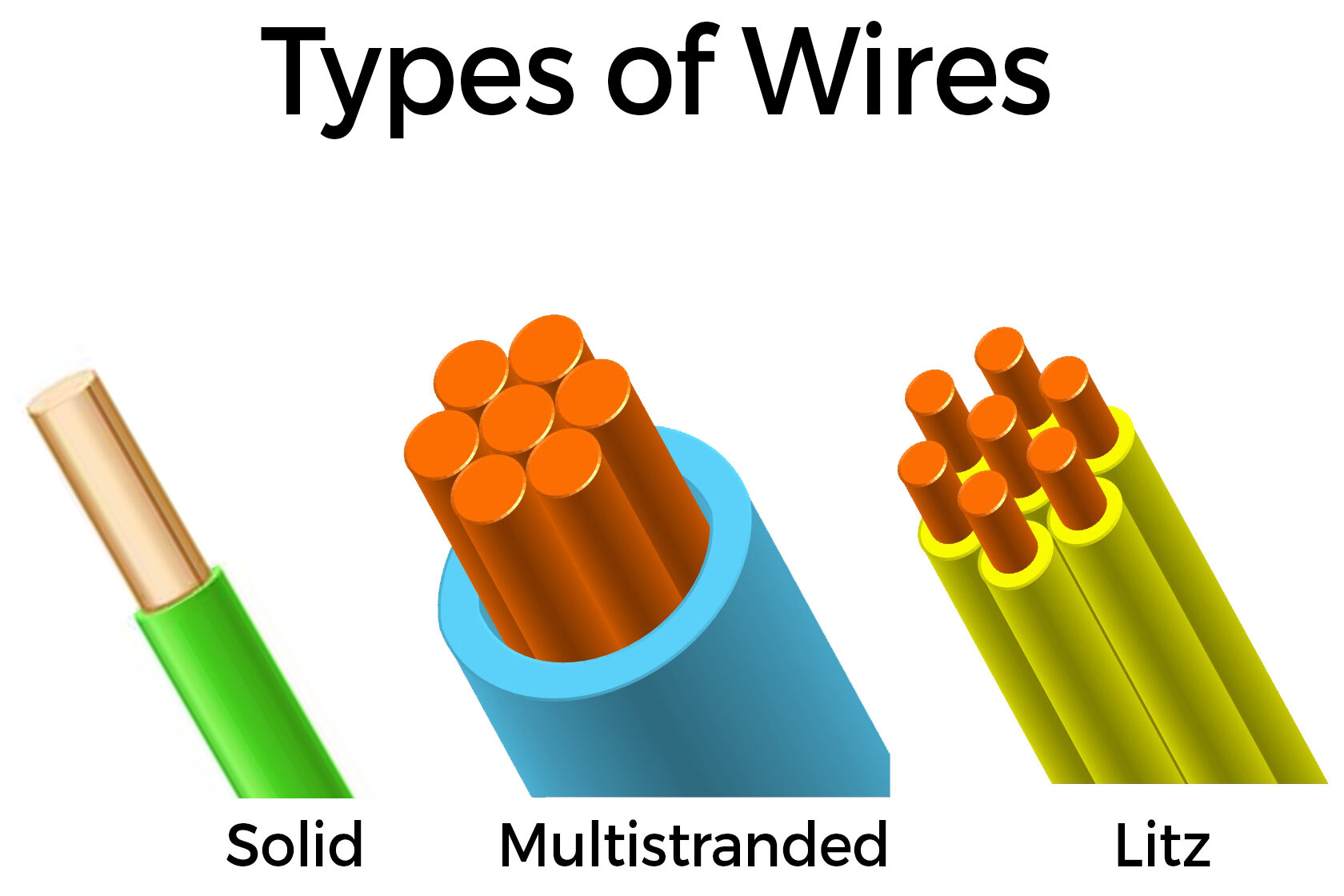
Let’s talk wires! When it comes to building systems, wiring between subsystems is often overlooked. The type of wire you use can significantly impact performance. Everyone knows what solid wires are. As the name suggests, it’s a wire made of a single-core material. It’s great for passing DC current with low resistance. However, it struggles with higher-frequency currents due to skin depth(Refer to Older Posts) limitations. Solid cable does not fully utilize its entire thickness to transmit current.
The multistranded wire is made up of multiple strands of smaller gauge wires that are twisted together. It is more flexible than a solid wire. Where multi-stranded wires differ from Litz wires is that Litz wires have a small insulator in between each of the wire strands. So each strand is not shorted each other as in a multistranded cable. From the basics of Skin depth, we know that current likes to travel on the outer surface for higher frequencies. Multistranded wires do perform better with more area utilization (compared to solid wires) but they can still act as an almost solid wire since everything internally is shorted. Litz wire on the other hand ensures there is individual insulation and because of that, Skin depth is large, and hence current passes through the entire cross-section of the tiny wires. This is usually why Litz wires are usually the preferred choice in high-frequency applications such as transformers, inductors, induction coils, and high-frequency power supplies. While Litz wires are more expensive and have enamel insulation that can be easily scrapped or sanded off, they are worth considering for high-frequency applications.
Experienced professionals in the industry who use Litz wires, feel free to share any other benefits you have noticed.
So, next time you’re choosing wires, consider the application carefully and choose the wire type that will give you the best performance.
Fun fact: Litz wire gets its name from the German word “litzendraht,” which means braided or stranded wire.
#BacktoBasics#Wire#Current#Electronics#Power#transmission#Skindepth
0 Comments
Comments are closed.